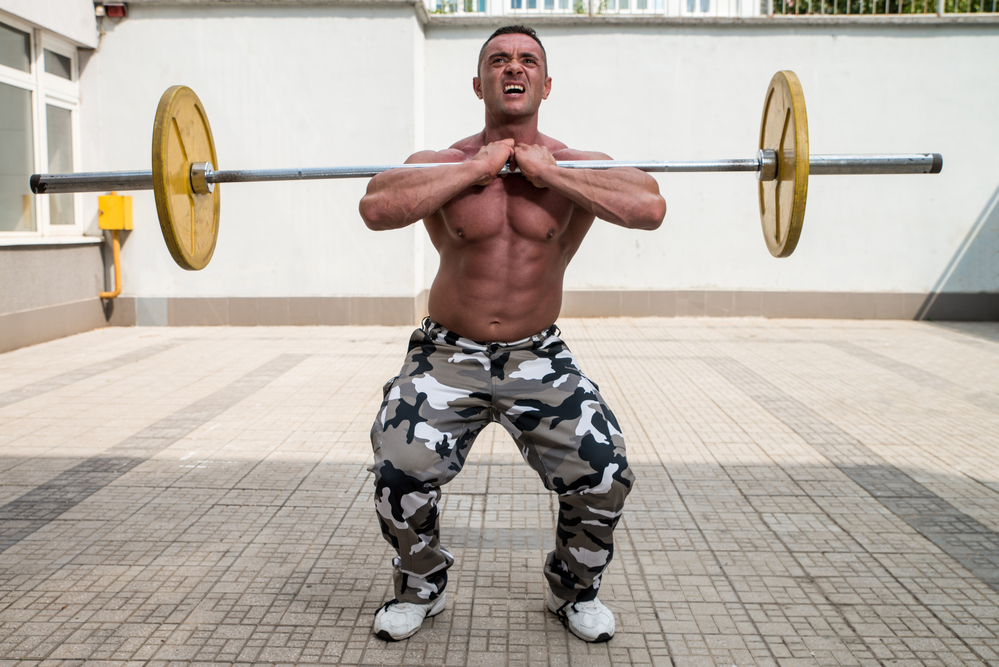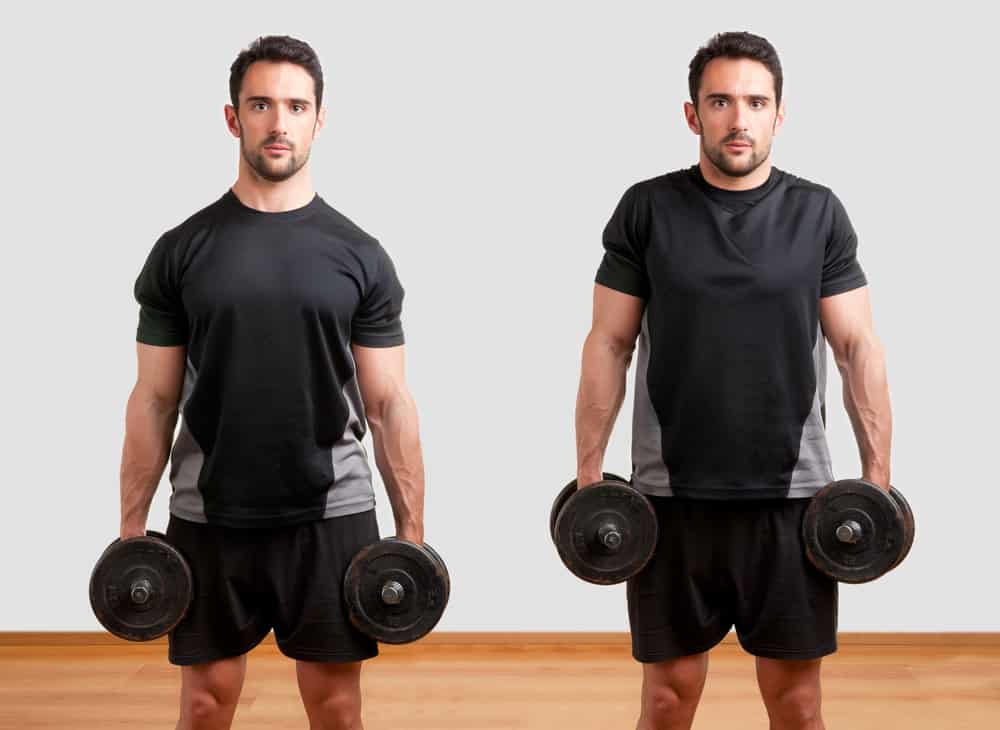Front squats work several muscle groups in both your upper and lower body.
Trying to build your traps can be challenging, so if exercises like front squats can help, then it’s worthwhile adding them into your training routine.
In this article, we look at whether front squats can help build traps or if there are other exercises better suited to developing this muscle group. Let’s get started.
Do Front Squats Work Traps?
During front squats, your traps will activate due to the position of the bar, causing them to engage to help keep the weight in the correct position. While traps are not a primary muscle worked in front squats, you will get some trap development during the exercise.

What muscles do front squats build?
- Quads
- Hamstrings
- Glutes
- Core
- Upper back
- Shoulders
- Traps
Front squats predominantly work your quads, hamstrings, and glutes.
However, due to the bar being on the front of your body, front squats also work your abs, upper back, shoulders, and traps.
Front squats are a great exercise for shifting the focus onto different muscle groups than back squats, which can result in bigger muscle gain as well as reducing stress on your lower back.
Why do some people get sore traps after front squats?
Muscle Activation
During front squats, your traps activate which can lead to discomfort after your workout.
This discomfort is due to microscopic tears forming in your muscles during exercise. Your body repairs the tears which creates bigger and stronger muscles.
You may find that your traps are sore after front squats as they’ve been working hard to support the bar being held on the front of your body.
During back squats, your traps are less needed as your back and shoulder muscles support the bar.
This means that even if you are an experienced squatter, front squats will challenge your traps much more than you might be used to.
Weak Traps
You may get sore traps after front squats if your traps are weaker than other muscles used in the movement.
The weight you lift during front squats may be appropriate for your quads and upper back, for example, but your traps may be slightly weaker in comparison.
This means they have to work harder to move and support the weight.
If this happens, your traps will likely be sore after front squats until they catch up with the other muscles used in the exercise.
Injury
Your traps may be sore after front squats as a result of an injury.
If the soreness you feel is anything more than mild discomfort, it’s always a good idea to speak to a doctor to make sure you are not carrying an injury.
Best exercises for building traps
There are a huge amount of exercises that work your traps but some target them more specifically than others.
Exercises such as deadlifts and lat raise bring your traps into play to varying degrees, but if you really want to focus on building your traps, there are some key exercises to do.
Shrugs
Shrugs are a big trap-building exercise.
You can perform shrugs using a barbell, dumbbells, or you can even do them on a cable machine.
Shrugs activate your upper and middle traps and build strength, size, and endurance.

Upright Row
Upright row is an exercise where technique is extremely important.
When performed correctly, upright rows build mass and strength in your traps, but they also help develop your shoulder muscles too.
It is best to start off lifting lighter weights with higher reps until you have fully mastered the upright row technique, then you can add weight to the bar and build some serious traps.
Pull-Ups
Although predominantly an upper back exercise, pull-ups are effective at working your lower and middle traps.
Pull-ups are a great exercise to add to the end of your workout as a way of getting a little bit more work from your traps to help build their mass and strength.
Chin-Ups
Chin-ups can also help build your traps.
The key is to squeeze your traps hard at the very top of the movement.
Push-Ups
While predominantly a chest exercise, some types of push-ups are great at working your traps.
These include pike push-ups and handstand push-ups.
Sources
I’ve been in the fitness and strength training industry for nearly a decade. In that time, I’ve gained 30 pounds of muscle, written hundreds of articles, and reviewed dozens of fitness supplements. As for my educational background, I’m a currently studying for my Active IQ Level 3 Diploma in Personal Training.

